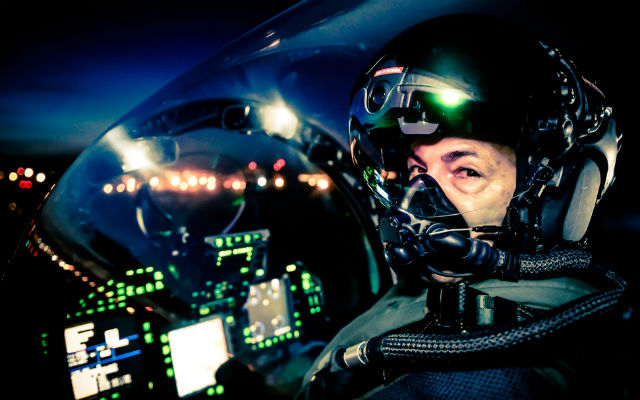Development of the BAE Systems Striker II helmet-mounted display (HMD) is due to end in the coming months, following the completion of a flight-test campaign to validate its integrated night vision capability.
A series of night sorties have been conducted since May to test the integration of night vision capability into the display. This will lead to developmental completion of the system “by the end of the second quarter”, the company says.
“We’re just finishing off the last piece, and expect a full system to be ready by the end of the second quarter this year,” says Mark Bowman, chief test pilot at BAE.
Striker II was developed as an alternative system for the Lockheed Martin Joint Strike Fighter, but was subsequently dropped in favour of the original Vision Systems International design. The new digital Striker has been qualified on the Eurofighter Typhoon, but has yet to gain a production contract.
The analogue version, which requires separate night vision goggles, is used by Typhoon operators, but production is due to come to an end in 2016 as BAE fulfils its contracts.
Production of the HMD peaked at 22 units per month in 2015, with an average of 12 per month, but this is expected to fall over 2016.

BAE Systems
BAE is confident the Striker II will eventually be adopted, and is looking at new technology that can be incorporated in the meantime, plus incremental upgrades for the current product.
This includes a variety of control methods, including eye tracking, blink control, and medical, sport and neurological technology.
“The company is very forward-leaning in what it is doing,” Bowman says. “There is a lot of investment in future technology. It’s very early days… we’re looking at the possibility of a spiral upgrade programme”.
Bowman says the UK’s Strategic Defence and Security Review, released in November, affirmed the relevance of the Royal Air Force’s Typhoon fleet to 2040, which will lead to either updates to the Strikers being used, or the acquisition of a new design. A sustainment contract for the delivered Strikers is also expected once production completes.
Meanwhile the company’s active flight control stick is expected to be certificated on board its first commercial platform by the end of 2016.
It is integrated on the F-35, and now the technology is becoming more advanced, this is rolling over into the civil sector on the Gulfstream G500 and G600 developmental business jets.
Noting that Gulfstream is leading in the incorporation of new technology on its aircraft, BAE says the active sticks will provide a link between the pilot and co-pilot, which appeals to potential operators of the type used to a traditional control system with inherent feedback.
Source: FlightGlobal.com























